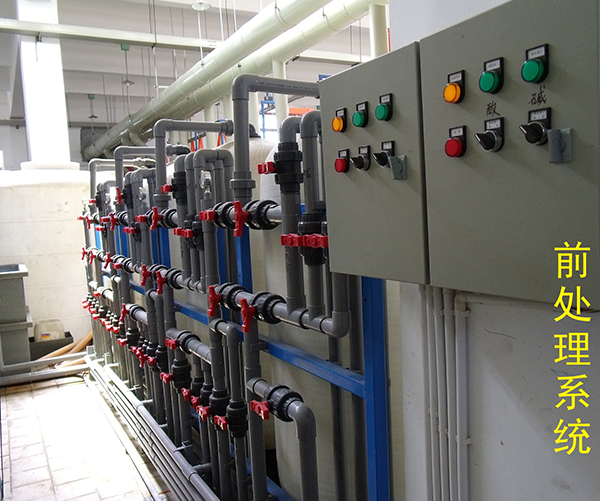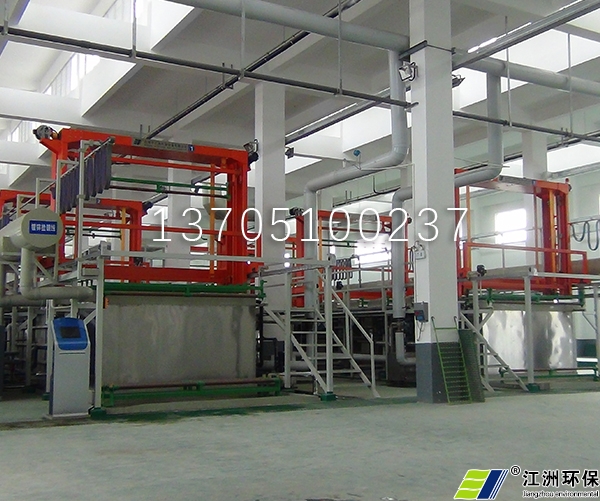Electroplating equipment Frequent problems in
1. Pits. The pitting is due to the dirty workpiece. The plating solution is dirty. It is characterized by convexity, no brightness and no fixed shape.
2. Pinhole. The pinhole is due to the hydrogen adsorbed on the surface of the plated part, which is not released for a long time. When the bath is short of wetting agent and the current density is high, pinholes are easily formed.
3. Air streaks. The flow streaks are caused by excessive additives, too high cathodic current density and too high complexing agent. If the bath flows slowly and the cathode moves slowly at that time, the arrangement of electrodialysis crystallization will be affected during the process of hydrogen rising against the workpiece surface, forming streaks of airflow from bottom to top.
4. The coating is brittle. The brittleness is mostly caused by excessive additives, brighteners, or inorganic substances in the plating solution. Too many organic impurities. When the nickel layer cracks with the matrix, it is determined that the nickel layer is brittle. When the tin layer cracks with the nickel layer, it is determined that the tin layer is brittle.
5. Masking. The masking is because the soft overflow on the pin part of the workpiece surface has not been removed, so it is impossible to electrodeposit the coating here.
6. Airbags. The air bag is formed due to the shape of the workpiece and the condition of air accumulation. During electroplating, air pockets can be avoided by paying attention to the hook direction of the workpiece.
7. A "tin flower" is opened in the center of the plastic black body. There is tin coating on the black body. This is because the upward parabola of gold wire is too high when the electronic tube is soldered. The gold wire is exposed on the black body surface during plastic sealing, and tin is plated on the gold wire, like a flower.
8. "Tin climbing". This is because the SMD frame is brushed with a copper brush in the pre plating process, and the worn copper powder embedded in the black body is not easy to wash off, becoming a conductive "bridge". When electroplating, as long as the electrodialysis metal builds a "bridge", it will extend, and the dendritic deposition crawls to connect with other copper powders, and the tin climbing area is growing.
9. "Whisker tin". This is because when SMD frame is silver plated by mask method, the mask device is not tight, and silver is also plated where silver is not required. During plastic sealing, part of the silver layer was exposed outside the black body. In the pretreatment, the silver layer is pried up, and the tin plated on the silver is like whiskers or piles of tin. Overcoming the exposure of silver layer is one of the keys of silver masking technology.
10. Orange peel coating. When the base material is very rough, or there is corrosion in the pretreatment process, or when the Ni42Fe+Cu base material is pretreated before plating, some copper layers have been removed, while some copper layers have not been removed in some areas, and the entire surface is not smooth. 1480124231916510.jpg
11. Cavity plating. There are dense and irregular pits (different from pinholes) on the surface of the coating, forming a "ceiling face" coating.
(1) When the spraying pressure is too high, the kinetic energy inertia of the glass bead impacts the plated surface into small pits. When the coating is too thin and the pit is not filled, it becomes a "ceiling face" coating.
(2) The base material alloy has uneven metallography and selective corrosion during pretreatment. If the recesses are not filled up after electroplating, the "ceiling face" coating will also occur.

12. Loose dendritic coating. When the plating solution is dirty, the concentration of main metal ions is high, the complexing agent is low, the additives are low, the cathode and anode are too close, and the current density is too high, so loose dendritic coatings are easy to form in the current zone. Loose coating is like foam plastic, with uneven branches, and the coating can be wiped off with fingers.
13. Double coating. The formation of double-layer coating mostly occurs when the operating temperature of the plating solution is relatively high. During the electroplating process, the workpiece is taken out of the plating bath and hung into the plating bath again. In this process, if the workpiece is raised for a long time, the plating solution on the workpiece surface will precipitate salt frost and attach to the workpiece due to the evaporation of water. When the salt frost is not dissolved in time for further plating, the coating will be plated on the surface of the salt frost, forming a double-layer coating, like Huafu biscuit, with a layer of salt frost sandwiched between the two layers of coating.
14. The coating is blackened. The main reason for the blackening of the coating is the high metal and organic impurities in the plating solution, especially in the low current density area, the coating is blacker; In the case of insufficient additives, black coatings will also appear in the middle of the large area to be plated; If the temperature is too low, the ion activity is small, and the current is too high, the gray black coating will also be formed.
15. Blunt peeling. Pre plating activation includes two chemical processes, one is oxidation process, the other is oxide dissolution process. If the oxidation process is not sufficient or the oxide is not dissolved in time, there is still oxide residue on the plated surface, and the coating will be peeled or rough.







